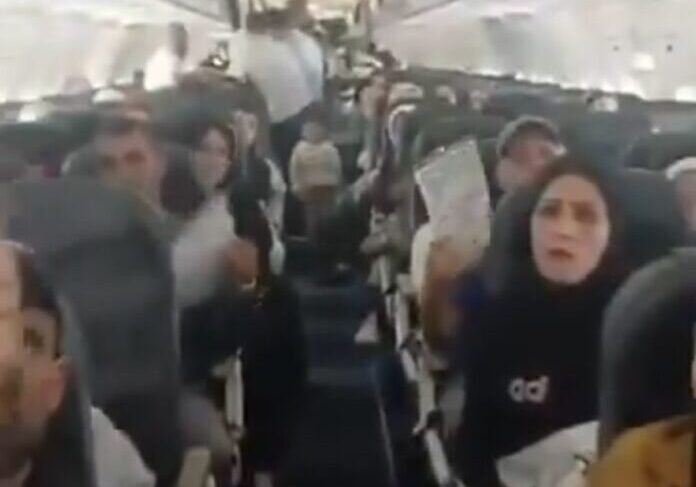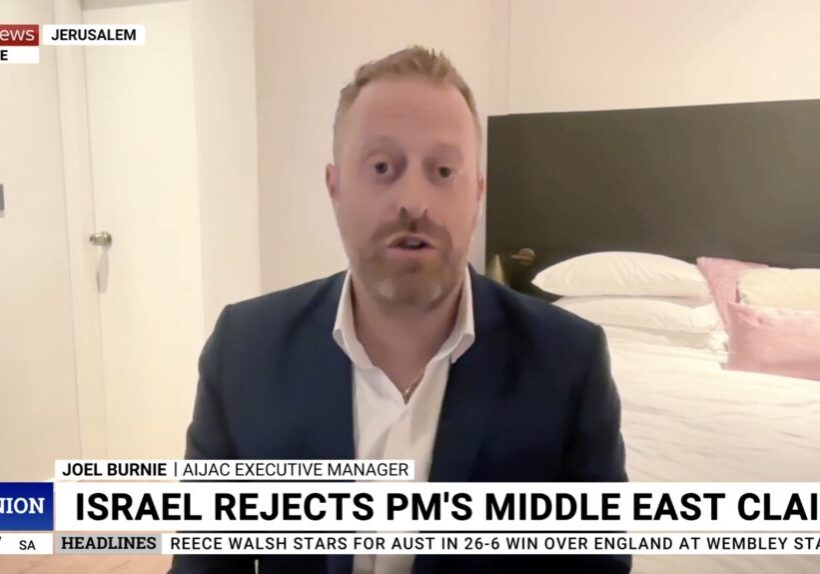Australia/Israel Review
Why Gaza languishes
Feb 26, 2015 | Neri Zilber

Fatah, Hamas and the failure of reconstruction
Neri Zilber
Over five months after last summer’s Gaza conflict ended, reconstruction of the territory has effectively ground to a halt, with the UN-designed postwar framework failing to move beyond its first phase. While recent statements by some international officials have put the onus on the donor community for failing to deliver on pledges, the reality is that continued divisions between Hamas and Fatah are the primary obstacle. According to the deal reached at war’s end, the prerequisite for any wide-ranging reconstruction was the Fatah-led Palestinian Authority (PA) returning to Gaza. The PA has shown no inclination to make good on its commitments, however, and Hamas has yet to relinquish real authority over the territory. With the two factions at a stalemate and the dire economic conditions that led to the war still in place, many believe that it is only a matter of time before another explosion in Gaza.
THE BEST LAID PLANS
Last summer’s war ended in a tenuous ceasefire brokered by Cairo, which called for the PA to station its security forces at the border crossings with Israel (Kerem Shalom and Erez) and Egypt (Rafah), and to oversee the rationalisation of Gaza’s divided government ministries. These provisions were built on the April 2014 Hamas-Fatah reconciliation agreement, to which both factions still pledged public fealty. Reconciliation was in fact a Hamas capitulation, meant to surrender at least nominal authority in Gaza to a Fatah-dominated “national consensus” government in return for much needed economic relief. Opening the crossings under the PA security forces while allowing at least some Hamas-affiliated civil servants to remain employed was intended as a first step in this regard. For its part, Israel was expected to increase the flow of humanitarian aid and reconstruction materials into a presumably PA-administered Gaza.
Last September, the UN created the Gaza Reconstruction Mechanism (GRM) to ease the longstanding blockade around the enclave while allaying Israeli concerns about Hamas diverting potential dual-use materials – specifically cement – for militant ends such as tunnel construction. The GRM would be overseen by senior officials representing the UN, Israel and the PA. Hamas, as an internationally designated terrorist organisation, could not be a legitimate go-between for reconstruction assistance and so was excluded by design.
Coming out of the war, all of the relevant parties – even Hamas – agreed to move forward according to these terms. “We do not object to any mechanism established by the UN,” said senior Hamas official Mousa Abu Marzouk in September. And in October, PA Prime Minister Rami Hamdallah stated that his government “will exert all efforts to recover, repair, and rebuild Gaza as an integral region of Palestine.”
INSPECTION AND VERIFICATION
Shortly after the war ended, a damage assessment survey was undertaken in Gaza by a team of UN and local engineers, who screened houses, roads, and infrastructure for immediate recovery and reconstruction needs. The survey information was entered into an electronic database created by the UN and run by the PA Ministry of Civil Affairs, with oversight by Israeli military officials. Using this database, the ministry was expected to serve as the point of contact for individual homeowners and PA-approved vendors of construction materials inside Gaza. In theory, the database would also hold plans for larger public infrastructure and private-sector projects, with the necessary engineering materials again being funnelled through licensed local vendors and contractors. In short, the GRM database was meant to create both an oversight system and a controlled market for cement, matching Gaza’s construction needs with approved vendors who would sell allotted amounts of cement at a certain price.
An additional layer of oversight was planned whereby the existing inspection system for UN projects – including closed-circuit cameras and private guards at cement warehouses, as well as inspection teams – would be expanded. The idea was to raise an inspections unit of 50 to 60 local and international engineers who would conduct physical checks at construction sites, down to individual bags of cement.
All of these measures were meant to mitigate the risk of “large-scale” diversions of cement, though international and Israeli officials privately acknowledged that “small-scale” diversions and black-market reselling were possibilities. In the event that approved Gaza vendors (currently numbering 13) were caught selling cement to unauthorised recipients, they would be excluded from the reconstruction mechanism.
TWO STREAMS OF RECONSTRUCTION
From its inception, the GRM differentiated between two streams of reconstruction work: UN-related and PA-led. UN-affiliated construction projects, such as schools, clinics, and infrastructure supportive of basic utilities, would now be fast-tracked by Israeli authorities on a “Program of Works” scale (as opposed to the previous project-by-project basis, which often took months). The pre-war UN-led portfolio for Gaza, which totalled approximately US$650 million, was approved in September 2014 and has moved rapidly toward completion. An additional US$1.5 billion was pledged at an October donor conference in Cairo, primarily for projects related to the UN Relief and Works Agency (UNRWA); according to UN officials, however, much of that funding has failed to materialise.
The PA was expected to lead the bulk of the GRM’s projects, with significant input from the Gaza private sector. These would include large public infrastructure initiatives (e.g., hospitals, schools, utilities) as well as private sector projects (e.g., factories). In theory, donor pledges were to be translated into specific projects, planned, overseen and executed through the relevant PA ministries. To date, however, few if any of these projects have materialised, due to the lack of PA government presence in Gaza. With no PA officials around and the local ministries still controlled by Hamas, the technical obstacles continue to be prohibitive – never mind the political obstacles for the PA and international community of directly rebuilding Gaza for Hamas.
The PA-led stream of the GRM also included another, more immediate dimension: repairing damaged homes. Rehabilitating housing stock affected by the war was intended to be the GRM’s first phase, allowing internally displaced persons to rebuild on their own and return home. Official estimates on the number of damaged and destroyed homes have varied: around 60,000 affected homes were initially reported, but the UN recently increased the number to 100,000.
On the bright side, even UNRWA officials critical of the pace of reconstruction stated last month that the GRM “is increasingly working well for repairs.” At the same time, they highlighted the need for more assistance – primarily financial – for those homes “totally destroyed.” According to figures made available by the PA Ministry of Civil Affairs in early January, over 42,000 individuals requiring construction materials for repairs have been cleared by the GRM, with 15,600 actually receiving materials. Moreover, through Israeli facilitation, 18,000 tons of cement have been imported into Gaza, with 15,000 tons sold to authorised individuals. In other words, as of January, there was more cement inside Gaza than could be legally bought, so the system is working and importantly, the supply of materials is not the main impediment to reconstruction.
According to some UN officials, the bottleneck is due to financial shortfalls in donor pledges, primarily to UNRWA, but this is likely only part of the story. In truth, repairing homes via the GRM was meant to be primarily PA-led and private, not UNRWA-led. Individuals seeking cement for repairs would be entered into the database and given vouchers by the PA; only the remaining individuals with refugee status would, as a last resort, receive additional assistance from UNRWA. Tellingly, press reports from inside Gaza have highlighted a growing black market in recent months, with bags of cement bought through the GRM for around US$6 being resold for four times that amount. For some Gazans, the decision to resell such materials appears to be a trade-off between repairing their homes and earning money to feed their families.
A QUESTION OF POLITICAL WILL
The reconstruction mechanism established by the UN for post-war Gaza is elaborate, with many potential loopholes, but it did offer the territory a new path forward after seven years of Hamas-induced blockade and war. And the latest round of fighting showed Israeli policymakers that the status quo ante in Gaza was simply not sustainable.
In a significant policy shift, Israel gave its consent to the above framework, easing the entry of construction materials into Gaza, permitting the exit of more Gazan residents and goods bound for the West Bank, and fast-tracking most proposed projects – not just UN, but also Qatari road projects and even a new Coca-Cola plant initiated by the Palestinian private sector. Israel also facilitated the transfer of a one-time cash payment from Qatar to Hamas-affiliated non-security civil servants.
Critics rightly point out that more should be done about the slow pace of reconstruction and the still-limited freedom of movement for people and goods. Yet the GRM was always envisioned as a temporary mechanism, meant to improve immediate humanitarian conditions in Gaza while starting a responsible reconstruction process. A more durable solution was, and remains, contingent on internal Palestinian politics.
As Robert Serry – the UN special coordinator for the Middle East peace process and the man who created the post-war mechanism – said recently, “We need a [Palestinian] government…that is able to take responsibility…We have a [UN] mechanism that is working, but almost everything else is not in place.” Serry went public with these criticisms after Hamas spurred protestors to ransack a UN compound in Gaza on January 28. Since last November, the group has taken an increasingly belligerent stance against the UN mechanism, no doubt to deflect public anger regarding the slow pace of reconstruction and the group’s continued de facto authority over the territory. For its part, the PA has shown no sense of urgency in either deploying its security forces to Gaza’s border crossings or embarking on ministerial reform, as it has been urged to do. Moreover, the aforementioned Cairo donor conference generated US$5.4 billion in pledges over the next three years, but even if this money actually materialises, less than half of it is directly slated for Gaza reconstruction – the PA’s initial request to donors earmarked a majority of the prospective funds for its own governmental functions.
Despite the continued standoff between the two Palestinian factions, some have taken to blaming donors for their paltry financial support, the lack of which Serry termed “scandalous.” Yet he also pointed out that the absence of necessary elements on the ground – a product of the intra-Palestinian political situation – assuredly “influences [the] decisions of donors.” The real scandal, then, is why the international community should feel compelled to care about the people of Gaza when their own self-selected leaders, both Fatah and Hamas, so clearly do not.
Neri Zilber is a visiting scholar at The Washington Institute. © Washington Institute, reprinted by permission, all rights reserved.
Tags: Palestinians






